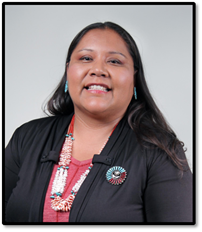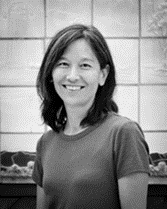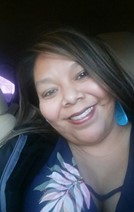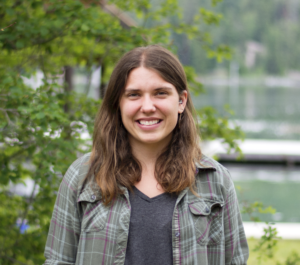Apply now to join our next cohort of Community Science Fellows and Community Leads!

Photo credit: John Hosteen
This project aims to empower local community members and youth from three communities on or near the northern Navajo Nation to monitor the quality of their drinking water by training them in water quality sampling, testing methods, and data interpretation. With help from the community mentors and project scientists, youth will communicate results to the broader community to encourage informed decisions about where to access drinking water. The long-term goal of this project is to empower Navajo communities: young citizen scientists will know how to test their water and effectively communicate the results, and community members will have the knowledge to promote healthy lifestyles and make the best decisions for their families. If this project is successful, the model could be sustained and replicated across other Navajo Nation communities.
To most Navajo People, water is sacred and living. But establishing confidence in water safety is not an easy task given the historic events on the land, and concerns about water quality that have persisted on Navajo Nation land for hundreds of years. Uranium, vanadium, oil, gas, and coal mines, along with other natural resource extractions, have occurred throughout the Navajo Nation, leading to mining seepage which has the potential to pollute groundwater and surface water. People without access to running water in their homes, or who are dealing with water shortages and insecurity, may use livestock water wells for consumption, which are known to contain contaminants such as arsenic and uranium. In addition, recent events like the Gold King Mine Spill have reinforced concerns about the safety of drinking water. Distrust in water quality resulting from decades of natural resource extraction has led to a desire for community generated water quality testing.
The Four Corners region of the Navajo Nation has been actively engaged in promoting water access and consumption for the past few years, but distrust in water quality persists. The Notah Begay III Foundation (NB3F) “Water First!” community learning group identified barriers leading to children choosing sugar sweetened beverages instead of water and recommended community initiatives including setting up infused water stations and 30 day water challenges. These efforts to promote water consumption have been hampered by concerns about water quality.
The three regions of the Navajo Nation leading this project represent a population of about 3000 people, spread across the Four Corners Region of the high desert Colorado Plateau. An estimated 30% of people on the Navajo Nation lack access to running water, but even for those who do, concerns remain about the safety of their water. Communities are very rural and it is common for families to haul water to their homes in large containers in the back of trucks or on trailers. This project will support autonomous monitoring of water quality; it’s vital that the community feel confident in the quality of available drinking water as water is life.
The first phase will focus on planning and conducting water quality testing.
The second phase will focus on communicating and sharing the results with the surrounding communities, enabling each resident to make their own informed decisions about water consumption.

Carmen George, MS [Navajo] (she/her) is from a small community on the Navajo Reservation near the four corners of the US called Beclabito, NM. Carmen has been at the Community Outreach & Patient Empowerment program for 6 ½ years as the Research & MEQ manager. COPE is a non-profit out of Gallup, NM that works in close partnership with Brigham & Women’s Hospital and Partners in Health. Together, the organizations are committed to improving the health of Native people through programs such as Water First, Fruit and Vegetable Prescription program, and Healthy Navajo Stores Initiatives. Working for the past 16 years on the Navajo Reservation has been rewarding and Carmen has seen small changes in the communities like children choosing infused fruit drinks over soda, which makes the public health initiatives worthwhile.

Dr. Sonya Shin is a physician trained in infectious disease and internal medicine. She has worked for more than 20 years with the international social justice organization, Partners In Health, to develop and evaluate community-based programs to advance health equity. Since 2009, Dr. Shin has worked with Navajo Nation as the founding director of Community Outreach and Patient Empowerment Program, a Native-led 501(c)3 based in Gallup NM. She currently serves as the Contact Tracing Lead under the Navajo Nation Unified Command. She is also a practicing physician at Gallup Indian Medical Center.

Kerlissa Bitah, Navajo, is Salt Clan born for Clamp Tree Clan from Teec Nos Pos, Arizona. She works for the Family and Child Education (FACE) Program at T’iis Nazbas Community School in Teec Nos Pos, Arizona for the past 16 years. She coordinates the family literacy program designed to help Native American families, focusing on both adults and children (prenatal to 5 years) to become healthy and better themselves as individuals and as a family. The FACE program puts on school events to help families transition and become comfortable in school and community settings. To carry out this work, Mrs. Bitah also works closely with the local Chapter House, tribal officials and local resources in the community. It gives families enrolled in the program a sense of belonging and also increases participation in community events.
Malyssa Egge (she/her) has spent over a decade working with tribal, state, federal, and private grants and programs throughout the northern Navajo Nation and southeastern Utah. Malyssa completed a bachelor’s degree in Psychology and Native American Studies at the University of South Dakota and a masters in Rural Sociology with an emphasis in Native American Community Development from South Dakota State University. Malyssa acknowledges that these expensive pieces of paper are not the only way to show competency and believes real credentials will never show up on paper. Malyssa is fascinated by the plant kingdom and concepts of food sovereignty. She enjoys the desert’s petrichor, the brilliant night sky, syncopated rhythm, contributing to community, and investing in youth.
John Hosteen (Diné) of the Red Ochre and Tobacco Clan is a local videographer/photographer/river guide based in the four corners region of the southwest. John facilitates and collaborates with tribal and non-tribal organizations with the common interest of wellness, prevention, health equity, and health promotion. He is currently producing a video documentary and video projects for JHCAIH and the IHS.
Alan Kolok is the Director of the Idaho Water Resources Research Institute at the University of Idaho. An academic scientist, Alan served as the Founding Director of the Nebraska Watershed Network at the University of Nebraska – Omaha and as Director of the Center for Environmental Health and Toxicology at the University of Nebraska Medical Center. He moved from Omaha to Moscow for the fall semester, 2017.
Alan received his Ph.D. from the University of Colorado, his M.S. from the University of Washington, College of Fisheries and Aquatic Sciences, and his B.A. from the Miami University. A dedicated writer, he has published over 80 peer-reviewed scientific articles on a variety of environmentally oriented issues. He has also published two books: Modern Poisons: A brief history of contemporary toxicology (2017) and Twist (2019), a science fiction novel involving the unusual self-replicating proteins known as proteins. He is in the process of writing his third book, Generally Regarded as Safe, a history of the interplay among chemicals, their impact upon the environment and human health, and our efforts to regulate them.

Kate Evans (she/her) is a PhD candidate in the Division of Biological Sciences at the University of Montana/Flathead Lake Biological Station. Her current work focuses on the microbial community and metabolism of Flathead Lake with a particular interest in nutrient inputs. Prior to grad school, she obtained a BS in geobiology from Caltech and spent three summers at the Lowell Observatory in Flagstaff, Arizona studying red supergiant stars. Her time in astronomy left her with a deep interest in coding and modeling, and she spent time with a local Montana high school teaching coding during an after school club. Outside of work, she enjoys hiking, fostering kittens, and baking (sometimes poorly).
(c) 2025 Thriving Earth Exchange